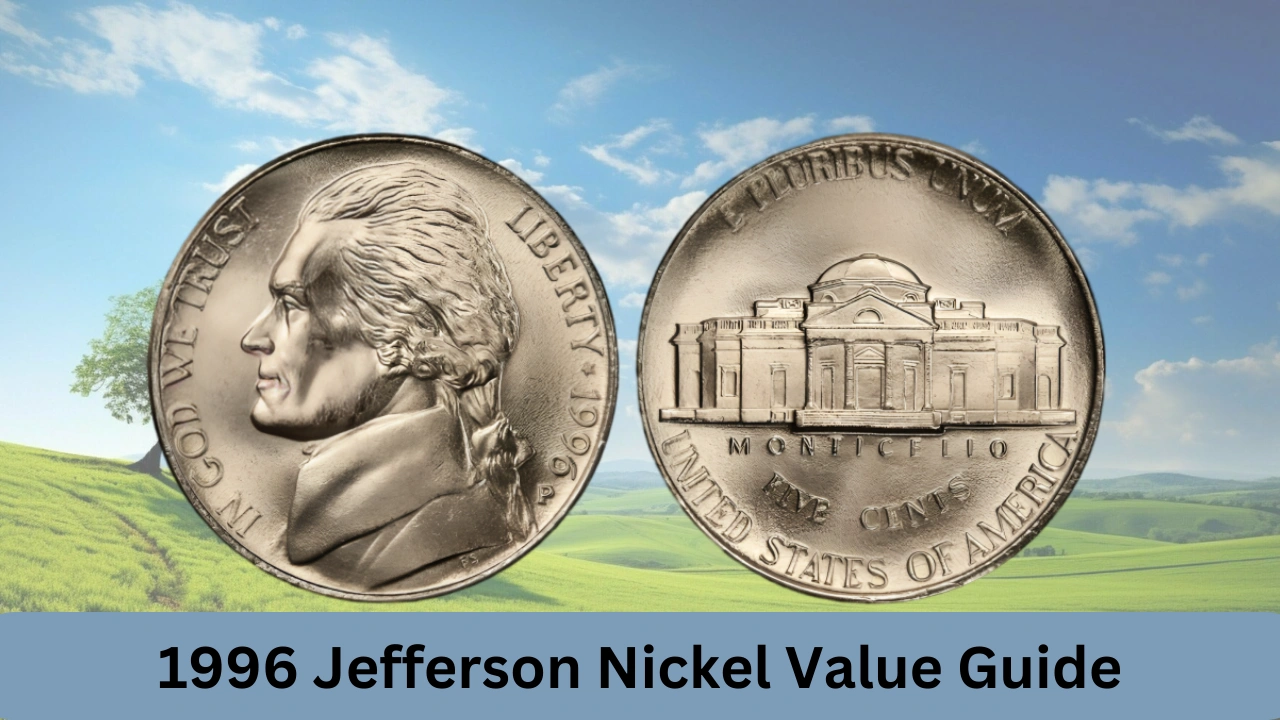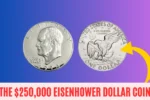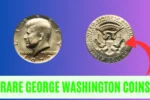Although the 1996 Jefferson nickel might not seem like a particularly valuable coin at first glance, certain versions are worth much more than their face value of five cents. Collectors highly prize these coins, especially those that are in excellent condition, contain rare errors, or feature specific classifications such as Full Steps.
For both experienced numismatists and casual collectors, determining the value of your 1996 Jefferson nickels can be a fun and rewarding process. This comprehensive guide will help you understand the factors that influence their worth.
Overview of the 1996 Jefferson Nickel
The Jefferson nickel has been part of U.S. coinage since 1938. The 1996 version features a portrait of Thomas Jefferson on the obverse and an image of Monticello, Jefferson’s home, on the reverse. The 1996 nickels were minted at:
- Philadelphia Mint (no mint mark)
- Denver Mint (“D” mint mark)
- San Francisco Mint (“S” mint mark for proof coins)
Despite billions of these nickels being produced, some are much more valuable due to their unique features, condition, or rare minting mistakes.
1. Uncirculated 1996 Nickels
The condition of a coin is a major factor in determining its value. Uncirculated 1996 Jefferson nickels, particularly those graded MS-65 or higher, are especially prized for their original mint luster and lack of wear.
Value: An uncirculated 1996 nickel typically sells for between $0.25 and $1. Higher-grade examples (MS-67 or above) can fetch $10 to $20 or more, depending on demand.
2. Full Steps Nickels
Full Steps nickels are rare and highly coveted by collectors. These coins are called “Full Steps” because the steps on Monticello’s base are fully visible and continuous. This feature is difficult to achieve due to wear or weak strikes that often occur during the minting process.
Value: A 1996 nickel with Full Steps can be worth anywhere from $10 to $50, with some exceptional examples reaching even higher prices.
3. Error Coins
Errors during the minting process can significantly increase the value of a 1996 Jefferson nickel. Due to their rarity and uniqueness, error coins are highly desirable among collectors. Common types of errors to look for include:
- Off-Center Strikes: These can range in value from $20 to $200, depending on how much of the design is missing.
- Double Dies: Coins with doubled features, such as letters or parts of Jefferson’s portrait, are valued between $25 and $100.
- Die Cracks and Clashes: Coins showing cracks in the die or impressions of the opposite side’s design can be worth $10 to $50.
- Filled Dies: Coins with missing elements due to debris in the die can sell for $5 to $20.
4. 1996 Proof Nickels
The San Francisco Mint struck proof nickels for collectors, and these coins stand out because of their superior quality and mirror-like shine. Proof coins are not meant for circulation, which is why they tend to be rarer and more valuable than regular circulation nickels.
Value: A standard 1996-S proof nickel typically sells for between $2 and $5, with higher-grade proof coins fetching $10 or more.
How to Check Your 1996 Nickel
To evaluate whether your 1996 Jefferson nickel might be worth more than five cents, follow these steps:
- Inspect its condition: Look for signs of wear or damage.
- Check for mint marks: Use a magnifying glass to spot the mint mark or look for any errors.
- Examine the steps: Check if the steps on Monticello are fully visible to determine if it’s a Full Steps coin.
Conclusion
While most 1996 Jefferson nickels are worth just five cents, those that are uncirculated, feature Full Steps, have minting errors, or are proof coins can command much higher prices. If you think you have a valuable nickel in your collection, consider having it graded by a professional to uncover its true worth. That simple coin in your pocket might just be a hidden treasure!



